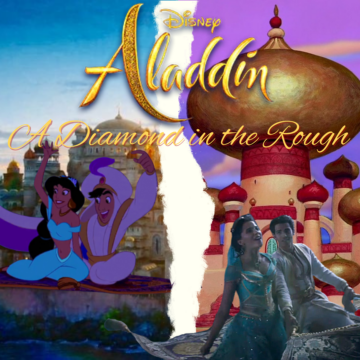
WARNING: This article will contain spoilers for both the animated and live action films.
Introduction
Aladdin features one of two POC classic Disney princesses, Jasmine. While the film has been criticized for relying upon stereotypes of Middle Eastern people, it is still a favorite of many.

In fact, Disney acknowledges this in an into image to the animated Aladdin.
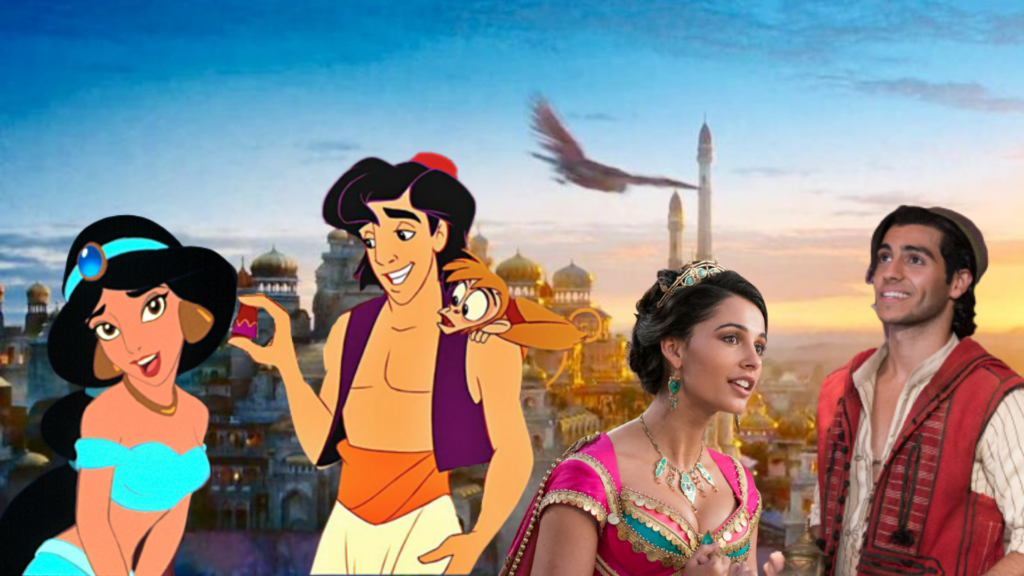
Jasmine is known for a headstrong, adventurous character who wants to marry for love, not for an alliance. Aladdin is a poor thief who steals because he needs to eat (not for fun, like the guards seem to think), which can be seen in Aladdin’s introduction song, “One Jump Ahead”.
Aladdin meets Princess Jasmine while Jasmine is disguised as a commoner, where they promptly fall in love (in Disney fashion).
The Connection Between Jasmine and Aladdin
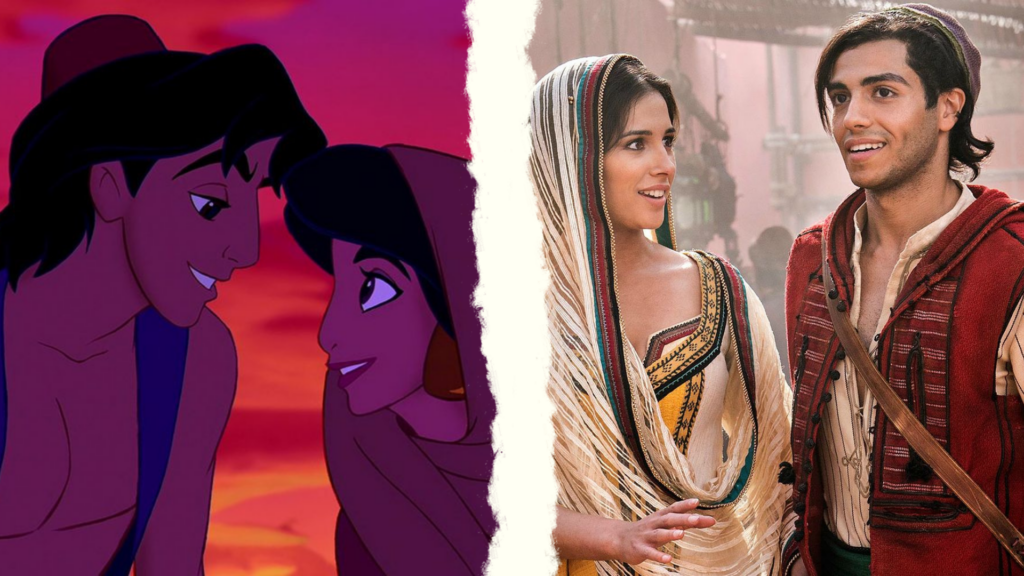
While two people becoming infatuated with each other in less than an hour is incredibly unrealistic (in my opinion), it is more believable in the live-action version. In the live-action version Jasmine and Aladdin have a deeper conversation with each other where they realize that they have the same dreams in life – mainly being someone else. In the animated version, however, Jasmine and Aladdin exchange one line of a dialogue and that is them disagreeing with each other’s view on life.
Sexualization of Characters
As I’m sure you’ve noticed from the image above, there are also some costume changes. For instance, Aladdin actually wears a shirt in the live action film. More importantly (in my view) is the lack of extreme sexualization of Jasmine (and all other women in the film, for that matter).
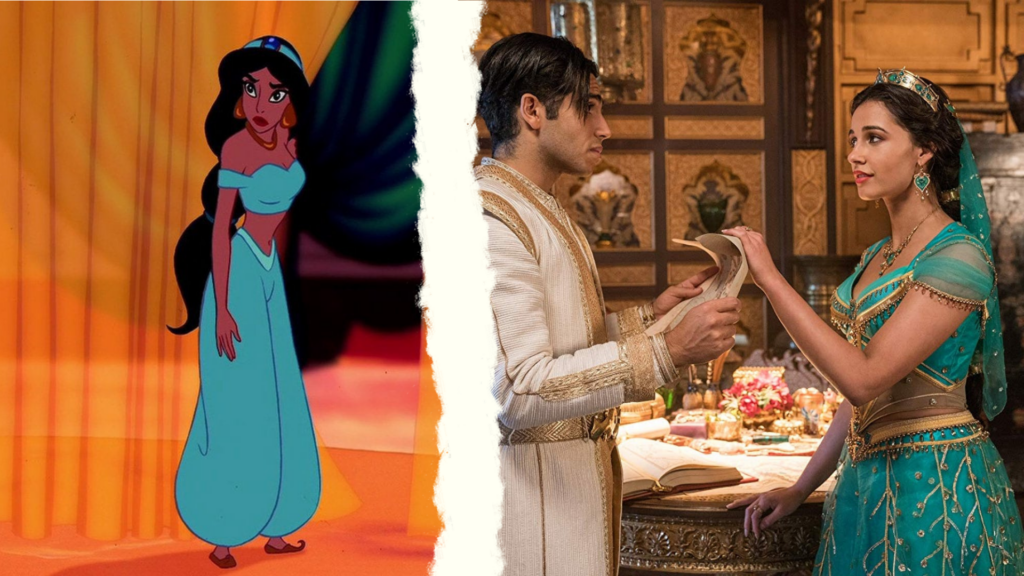
Jasmine’s outfit has similar core aspects – the pants, mainly –, but she is wearing more of a top and less of a bra.
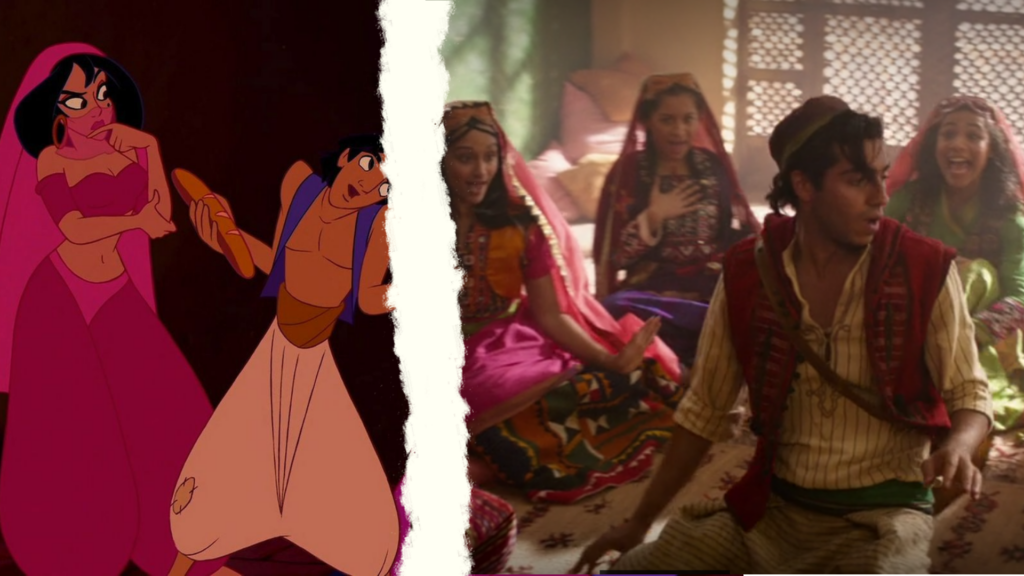
In fact, even the girls in the balcony during “One Jump Ahead” are much less sexualized. This was an issue that people that had with the animated film, so it absolutely makes sense that this was changed in the remake.
Jasmine’s Personality Change
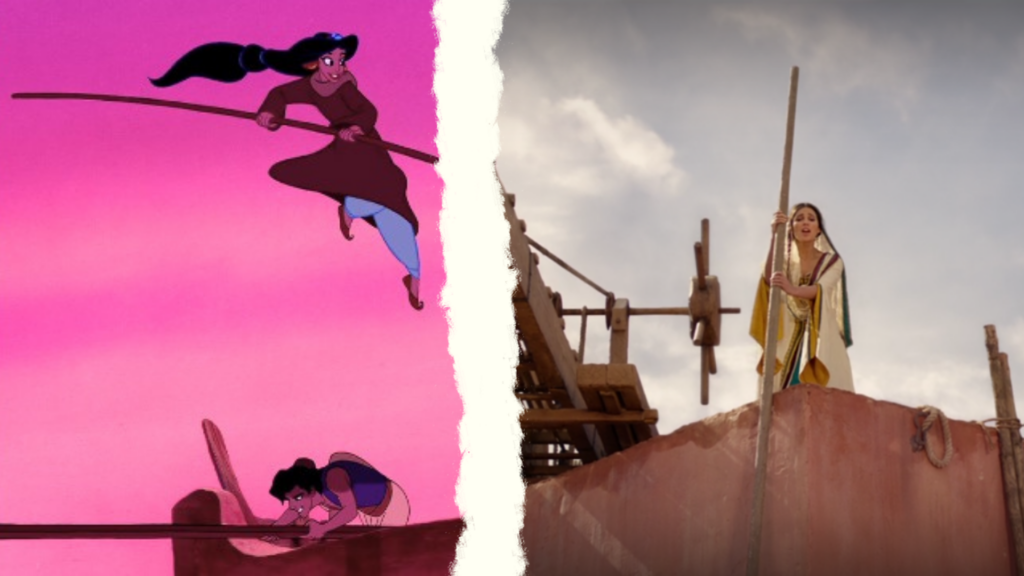
With Jasmine’s wardrobe change also comes with a bit of a personality change as well. There is a scene in both films where Jasmine has to jump over roofs using a long reed. In the animated film, Jasmine just does it, not even thinking about the consequences. However, in the live-action film Jasmine is afraid of jumping, only doing so when it’s either she jumps or she’s captured by the guards. I don’t understand why this change was made in this film – it doesn’t affect the plot in any sense – but this change certainly changes the audience’s perception of Jasmine and makes her seem less fearless, which is a major aspect of Jasmine’s character.
The live action film does add in a new personality trait to Jasmine, though; Jasmine is much more ambitious. Jasmine’s whole motivation for refusing to marry any of the princes in the animated film is because she wants to marry for love. In the live action film, Jasmine refuses to marry because she believes that she should be Sultan instead of the princes.
Side Characters
However, with an empowering upgrade to Jasmine we also get a downgrade to all of the sidekicks; Rajah, Iago, Abu, and Carpet all lose their personalities.
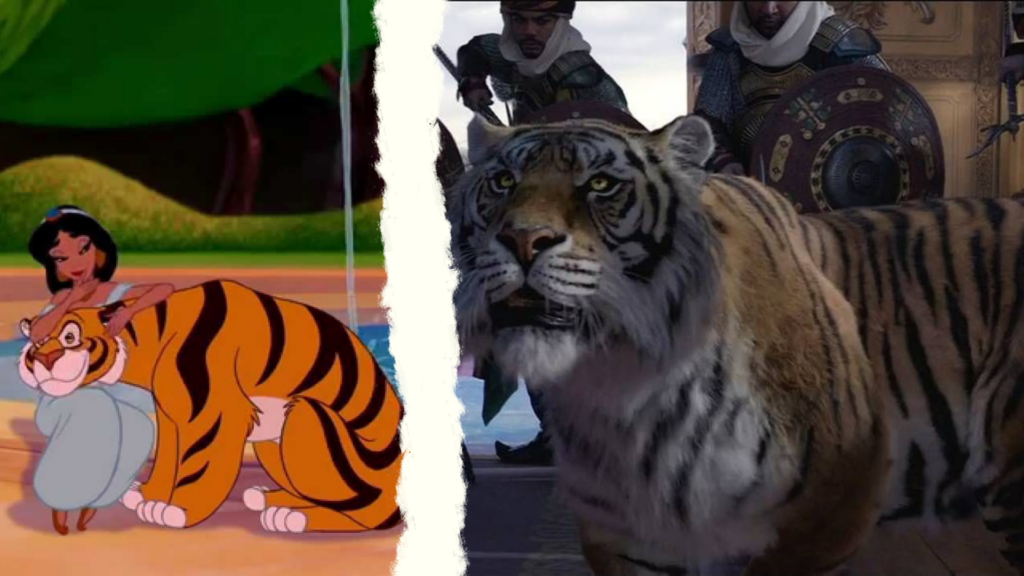
In the animated film, Rajah is very much a support animal for Jasmine. He comforts her, helps Jasmine leave the palace (even though it hurts him to see her leave), and he protects her from people she isn’t comfortable with. In the live-action film, Rajah just scares people. He doesn’t seem to feel any emotions aside from anger and his only role is to protect Jasmine.
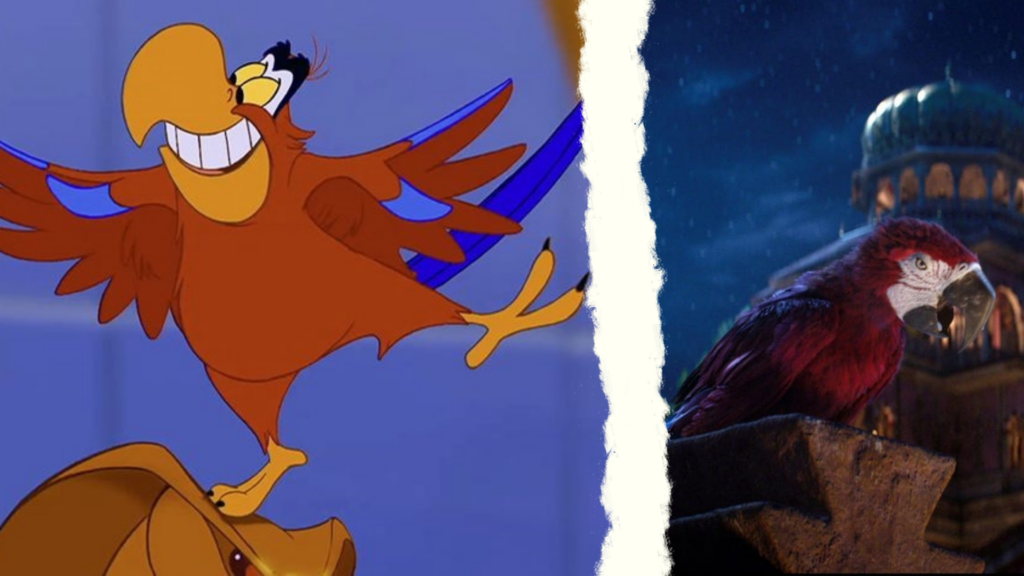
Similarly, in the animated film Iago is a very sassy character who always has a fun comment. In the live-action film, Iago is demoted to a parrot. Yes, I know he was already a parrot but Iago just repeats what people say, in true parrot fashion. We lose all of Iago’s fun remarks, which really propelled the story (in my opinion).
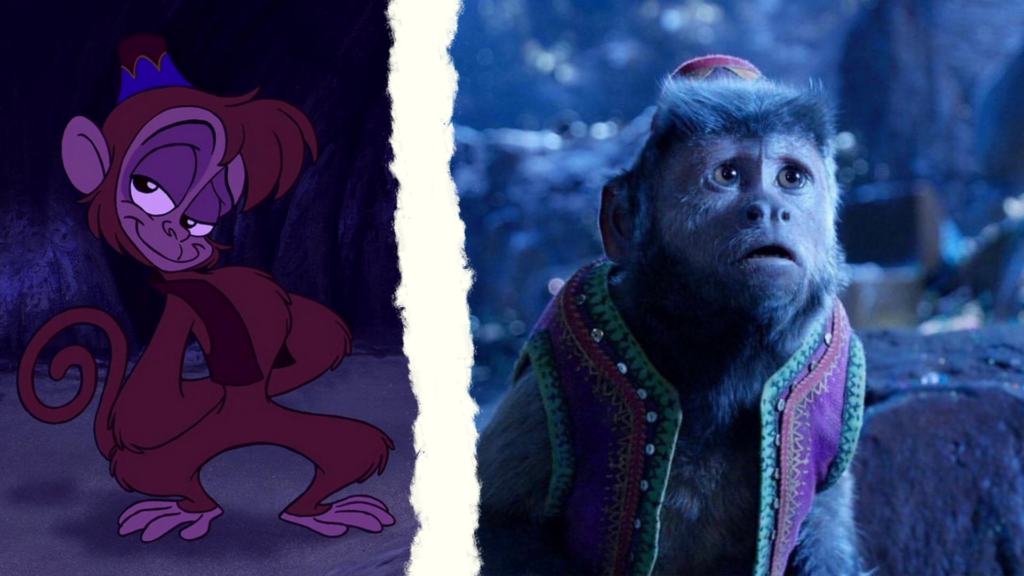
Abu is my favorite character from the animated film, mainly due to how temperamental and emotional he can be. In the live-action version, Abu moves the plot along in the same way (by touching a red diamond) but with no flare, which was very disappointing.
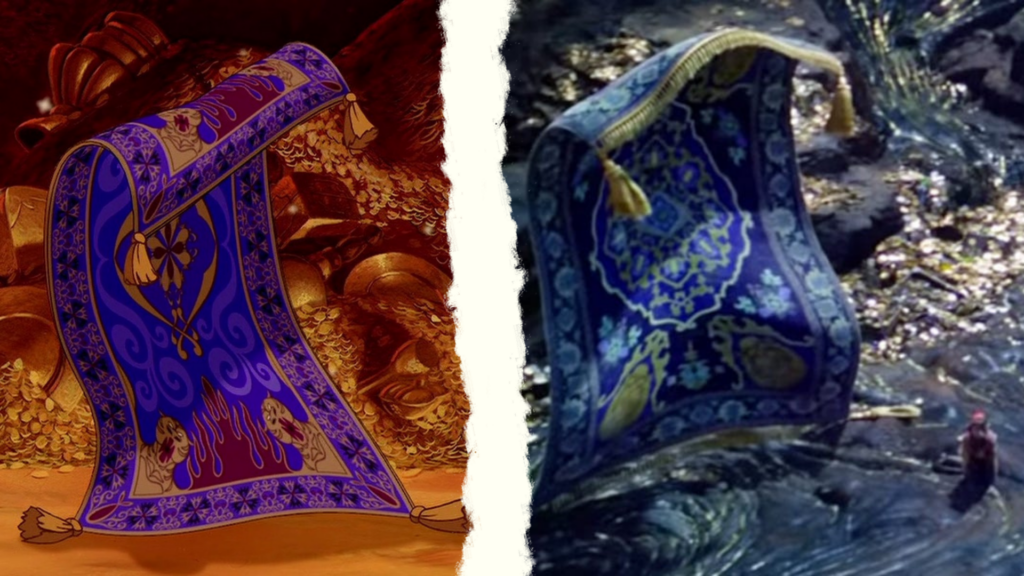
Carpet was a very interesting character in the animated story; he is very curious and also apprehensive about people. We can even see in some scenes that Carpet imitates what Aladdin is feeling. In the live-action movie, Carpet is just a flying carpet whose role is to be Aladdin’s chauffeur.
Genie’s Love Interest
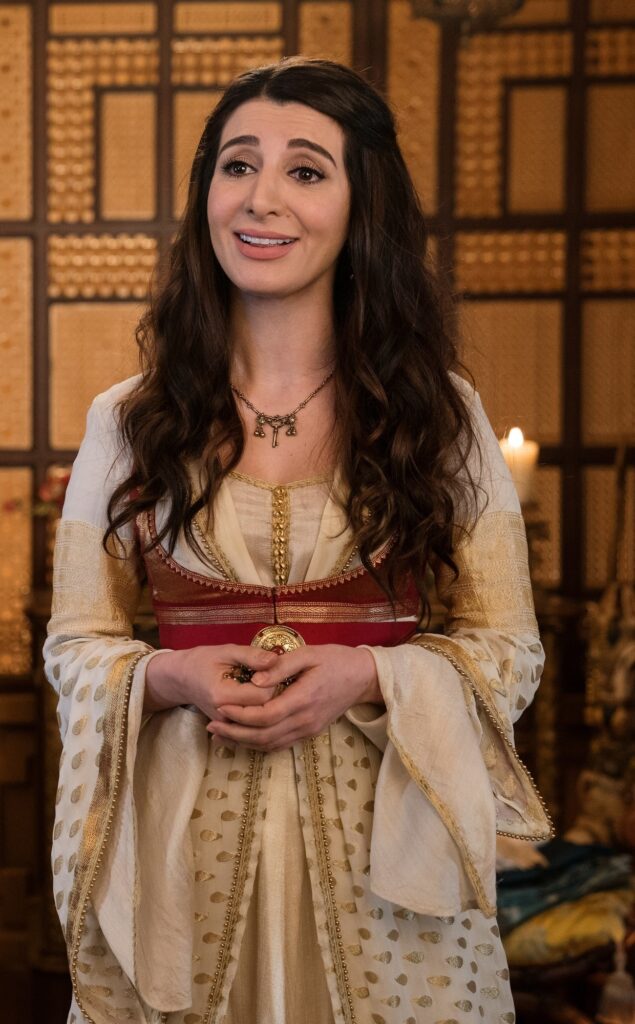
In the live-action film, we also meet a new character, Dalia, who is Jasmine’s handmaid. Now, I believe that Dalia’s role was to push forward some development within Genie. Genie has been alive for many millennia, so he has nothing to lose.
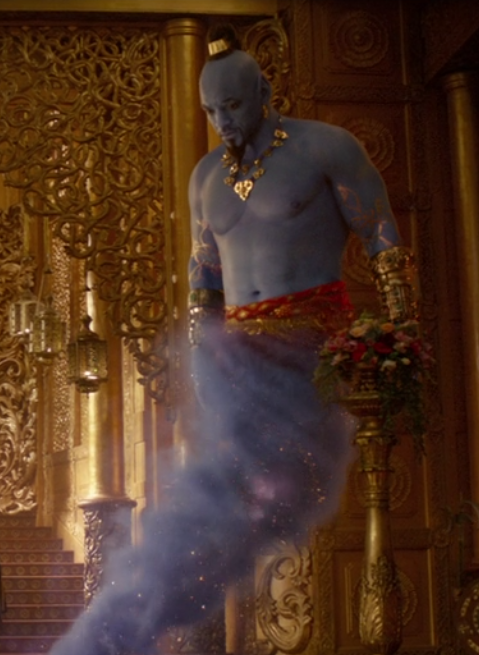
By giving Genie a love interest, Genie now has something to lose and thus starts feeling more things, like fear and shame (the latter of which can be seen when Jafar uses his wishes in front of Dalia) which make him seem more human.
Dalia is actually a really interesting character whose candid and blunt personality allow her to plainly explain some potential confusing parts in the plot.
Conclusion
There are also many plot tweaks that are interesting but don’t change the story in any way (so we won’t be going over them today), some minor changes to other characters, like the Sultan and Jafar, as well as a new, empowering song for Jasmine that really push the story along in a way that feels better.
Overall, I feel that the live-action film is better at not being as problematic as the original in terms of representation and that the plot moves itself along a bit better, but I just wish that we had kept the personalities of minor characters. What do you think? Is Jasmine’s change in character warranted? Did Genie need a love interest? And why would they change Abu?
